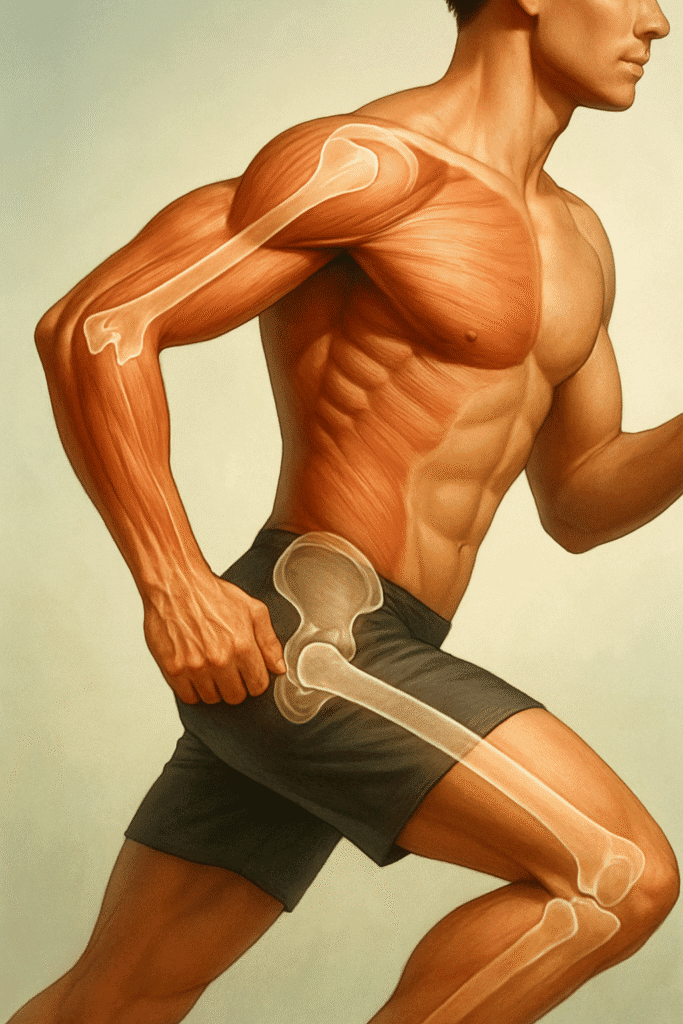In our modern society, many individuals find themselves sitting for extended periods at desks, fixated on screens, and participating in lengthy meetings. Although this may seem harmless, prolonged sitting can lead to stiffness, poor posture, and even chronic health issues. This is where office mobility stretches come into play, quick and easy mobility exercises you can perform at your desk or within the office to keep your body active and healthy.
The Importance of Movement for Our Bodies
Movement serves as a natural remedy for our bodies. Whether it’s walking, stretching, exercising, or dancing, each type of movement is crucial for maintaining our health. Sadly, the modern way of life, characterised by prolonged sitting and little physical activity, often leads people to overlook the significance of movement.
Maintains Healthy Muscles and Joints
Movement is essential for strengthening muscles and ensuring joint flexibility. Without consistent activity, joints can become stiff, muscles may weaken, and our mobility can decrease, making even the simplest tasks more challenging as we age.

Engaging in physical activity
Increases blood circulation, which helps deliver oxygen and nutrients to every cell in our body. This not only supports the functioning of our organs but also accelerates healing and lowers the chances of heart-related diseases.
Reduces the Risk of Chronic Illnesses
Regular movement can significantly decrease the likelihood of:
- heart disease
- Type 2 diabetes
- Obesity
- High blood pressure.
Even light exercises, such as walking or stretching, can greatly diminish the risk of these diseases.
Promotes Mental Well-Being
Movement triggers the release of endorphins (the hormones that make us feel good), which help alleviate stress, anxiety, and depression. Additionally, it enhances focus, memory, and overall mood.
Increases Energy
Rather than depleting our energy, movement revitalises our bodies. It strengthens our heart and lungs, making everyday tasks easier and less exhausting.
Improves Posture and Balance
Consistent movement fortifies the core, enhances posture, and helps prevent falls or injuries, a crucial aspect as we age.
Alleviates Muscle Stiffness and Discomfort
Spending long hours seated exerts pressure on the spine, neck, and shoulders. Office mobility stretches help relieve muscle tension and avert back pain, neck strain, and wrist stiffness.
Enhances Posture
One of the most significant challenges in office work is poor posture. Regular mobility stretching helps to open tight chest muscles, strengthen the back, and maintain spinal alignment, thereby reducing the likelihood of hunching or slouching.
Increases Blood Circulation
Remaining seated for too long can slow down blood flow, leading to fatigue and a heightened risk of blood clots. Stretching encourages circulation, delivering oxygen and nutrients to your muscles and brain
Boosts Energy and Concentration
Taking a brief stretch break revitalises both your body and mind. It lowers stress hormones, elevates energy levels, and aids in refocusing on tasks with improved concentration.
Averts Workplace Injuries
Repetitive actions such as typing and using a mouse can result in conditions like carpal tunnel syndrome. Mobility stretches targeting the wrists, shoulders, and neck can help prevent these frequent workplace injuries.
Promotes Long Term Health
Sedentary office work is associated with obesity, diabetes, and heart disease. Even a few minutes of stretching every hour can reduce these risks by interrupting prolonged periods of inactivity.
The Hidden Dangers of Sitting All the Time
In our modern world, we often find ourselves sitting for extended periods, whether at desks, in vehicles, or glued to screens. Although sitting might seem comfortable, excessive time spent in this position can lead to significant health issues. Researchers have even dubbed it “the new smoking” due to its extensive risks.
Muscle Weakness and Poor Posture
When you remain seated for long durations, Core and back muscles weaken. Hip flexors become tight, resulting in stiffness. Poor posture (like slouching and rounded shoulders) raises the chances of experiencing back and neck pain.
Reduced Blood Circulation
Sitting hampers blood flow, which can lead to swelling in the legs and ankles. Heightens the risk of varicose veins or even blood clots
Weight Gain and Obesity
Prolonged sitting decreases calorie expenditure. When combined with snacking or insufficient exercise, it can easily result in weight gain, obesity, and associated metabolic problems.
Higher Risk of Chronic Diseases
Sedentary habits are associated with Type 2 Diabetes due to diminished insulin sensitivity. Heart Disease – stemming from poor circulation and elevated cholesterol levels. Certain Cancers such as colon and breast cancer, as inactivity may disrupt hormonal balance.
Mental Health Issues
Excessive sitting correlates with heightened risks of anxiety and depression. A lack of movement diminishes blood flow to the brain, which can lower mood and productivity.

Shortened Lifespan
Research indicates that sitting for over 8–10 hours daily without engaging in physical activity is linked to a greater risk of premature death, irrespective of age or weight.
Types of Stretching Activities for Desk Workers
Sitting for extended periods at a desk can lead to stiffness, poor posture, and even long-term health problems. The positive aspect is that simple stretching exercises can help keep your body relaxed, enhance circulation, and alleviate workplace fatigue. Here are the most effective stretching types for desk workers:
Neck Stretches
Gently tilt your head from side to side and forward/backwards. Aids in releasing tension from prolonged screen time.
Shoulder Rolls and Shrugs Roll
Your shoulders in circles, both forward and backwards. Helps relieve tightness from leaning over a desk.
Upper Back Stretch (Seated Cat-Cow)
Sit up straight, arch your back forward, then round it backwards. Enhances posture and decreases back stiffness.
Chest Opener Stretch
Clasp your hands behind your back and push your chest forward. Counteracts slouching and stretches tight chest muscles.
Wrist and Forearm Stretches
Extend one arm and gently pull back the fingers with the other hand. Alleviates strain from typing and using a mouse.
Seated Spinal Twist
Sit up straight and gently twist your torso to each side. Loosens the spine and eases lower back pressure.
Hip Flexor Stretch (Seated or Standing)
Cross one ankle over the opposite knee while seated, or stand and lunge forward. Relieves tight hips from sitting for too long.
Leg Extensions
Extend one leg straight out under your desk, hold, then switch legs. Enhances blood flow and reduces leg stiffness.
Ankle Circles
Rotate each ankle in both clockwise and counter clockwise directions. Helps prevent swelling and improves circulation in the lower legs.
Conclusion
Movement goes beyond mere exercise; it’s about allowing your body to operate at its peak. From safeguarding against chronic illnesses to enhancing mood, energy, and overall wellness, consistent movement is essential for a healthy lifestyle. Whether it’s a brief stroll, a quick stretch at your desk, or an intense workout, every little bit of movement matters. Incorporate it into your daily routine, and your body will thank you with strength, vitality, and resilience.

 Medically reviewed by
Medically reviewed by